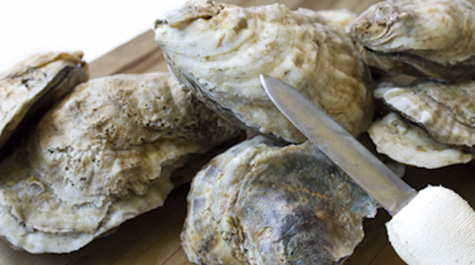A surprising possible advantage of oyster disease tolerance
You might expect that having a stomach bug would make you more susceptible to other illnesses, but recent data has caused researchers to question this assumption in aquacultured oysters.
In a small study, Virginia Institute of Marine Science (VIMS) researchers sought to determine whether oysters infected with the parasite Perkinsus marinus carried higher levels of vibrios—bacteria responsible for seafood-borne illness in humans.
The researchers hypothesized that because both the parasite and vibrios typically interact with oysters in the same place—the oyster’s stomach and intestine—damage from the parasite could reduce the oyster’s ability to manage its vibrio levels. Unexpectedly, the opposite may be true: in the study, the more severely an oyster was infected with the parasite, the less likely it was to harbor vibrios.
With funding from Virginia Sea Grant, VIMS graduate research assistant Lydia Bienlien and researchers Ryan Carnegie, Corinne Audemard, and Kimberly Reece are conducting a second study to further investigate this relationship.
While the parasite causes disease, and even death, in many oysters, it does not harm the people who eat them. Vibrios, however, can infect people who eat undercooked seafood.
“If this relationship is real, we might want to rethink the way we are breeding,” says Carnegie. For years, oysters have been bred for disease resistance, meaning the oysters are able to stop the growth of the parasite in their tissues entirely. But if the inverse relationship between the parasite and vibrios is real, disease-resistant oysters might be more susceptible to vibrios and, therefore, more likely to get people sick. If that’s the case, it would be better to breed oysters for disease tolerance, rather than disease resistance.
“Tolerance is a different dynamic entirely,” says Carnegie. If bred for tolerance, oysters can manage to survive even with relatively high levels of the parasite. One of the team’s goals will be to determine whether oysters are resisting the parasite’s effects, tolerating them, or maybe doing a bit of both. Answers to these questions could help inform which traits oysters should be bred for in the future.
“This is where we have to start thinking very carefully about what exactly we’re doing in terms of breeding,” says Carnegie, “because it might make a difference in terms of human disease.”

